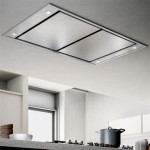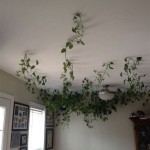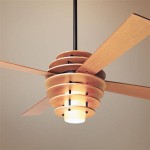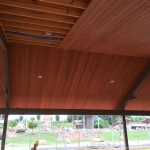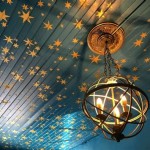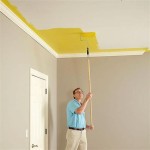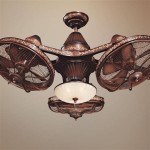False Ceiling Photo Design Ideas for Enhancing Your Living Room
The living room, often the heart of a home, serves as a space for relaxation, entertainment, and social gatherings. Its design plays a significant role in creating a comfortable and aesthetically pleasing environment. While furniture, wall colors, and flooring contribute to the overall ambiance, the ceiling is frequently overlooked. However, a well-designed false ceiling can dramatically transform the appearance of a living room, adding depth, character, and improved functionality.
False ceilings, also known as suspended ceilings or dropped ceilings, are secondary ceilings installed below the main structural ceiling. They offer a multitude of design possibilities and functional benefits, making them an increasingly popular choice for modern living room interiors. This article explores various false ceiling photo design ideas suitable for living rooms, focusing on different styles, materials, and lighting options.
Understanding the Benefits of False Ceilings
Before delving into specific design ideas, it is crucial to understand the advantages of incorporating a false ceiling into a living room. These benefits extend beyond mere aesthetics, impacting the overall comfort and practicality of the space.
Firstly, false ceilings provide excellent acoustic insulation. By creating a buffer between the main ceiling and the room, they dampen sound transmission, reducing noise levels from above and enhancing the overall tranquility of the living room. This is particularly beneficial in apartments and multi-story homes where noise pollution can be a concern.
Secondly, false ceilings contribute to thermal insulation. The cavity created between the two ceilings acts as an insulator, helping to regulate the temperature within the room. This can reduce energy consumption by minimizing the need for excessive heating or cooling, leading to lower utility bills and a more environmentally friendly living space.
Thirdly, false ceilings conceal unsightly elements such as wiring, pipes, and ductwork. This provides a clean and uncluttered appearance, enhancing the overall visual appeal of the living room. The hidden space allows for easy access to these utilities for maintenance and repairs without disrupting the aesthetic of the room.
Finally, false ceilings offer unparalleled design flexibility. They can be customized to incorporate various lighting fixtures, decorative elements, and architectural features, allowing homeowners to create a unique and personalized living room design.
Exploring Different False Ceiling Materials
The choice of material is a critical factor in determining the appearance, durability, and functionality of a false ceiling. Several materials are commonly used, each with its own set of advantages and disadvantages.
Plaster of Paris (POP): POP is a widely used material for false ceilings due to its versatility and affordability. It can be easily molded into various shapes and designs, allowing for intricate patterns and customized features. POP ceilings are lightweight, durable, and fire-resistant, making them a safe and practical choice for living rooms. However, POP requires skilled labor for installation and is susceptible to cracking if not properly maintained.
Gypsum Board: Gypsum board, also known as drywall, is another popular choice for false ceilings. It is a cost-effective material that offers excellent fire resistance and sound insulation properties. Gypsum boards are available in various thicknesses and sizes, making them suitable for different ceiling designs. They are relatively easy to install and provide a smooth, seamless finish. However, gypsum boards are less flexible than POP and may not be suitable for intricate designs.
Wood: Wooden false ceilings add warmth, texture, and a touch of natural beauty to a living room. They can be made from solid wood, plywood, or engineered wood, each offering different aesthetic and performance characteristics. Wooden ceilings provide good insulation and sound absorption, creating a comfortable and inviting atmosphere. However, wood is more expensive than POP or gypsum board and requires regular maintenance to prevent warping, cracking, and insect infestation.
Metal: Metal false ceilings are a durable and modern option for living rooms. They are typically made from aluminum or steel and are available in various finishes, including painted, powder-coated, and perforated. Metal ceilings are fire-resistant, moisture-resistant, and easy to clean, making them a practical choice for high-traffic areas. They offer a sleek and contemporary aesthetic, but can be more expensive than other materials and may require specialized installation.
PVC: PVC false ceilings are a lightweight and waterproof option that is ideal for humid environments. They are made from polyvinyl chloride and are available in various colors, patterns, and textures. PVC ceilings are easy to install and maintain, making them a cost-effective choice for budget-conscious homeowners. However, PVC is not as durable as other materials and may not be suitable for high-end living room designs.
Exploring Different False Ceiling Design Styles
The design style of a false ceiling should complement the overall aesthetic of the living room. Several design styles can be adapted to create a visually appealing and functional ceiling that enhances the space.
Recessed Lighting: Recessed lighting is a popular choice for false ceilings as it provides a clean and modern look. Recessed lights are installed within the ceiling cavity, creating a subtle and diffused lighting effect. They are ideal for highlighting specific areas of the room or creating a warm and inviting atmosphere. Recessed lighting can be combined with other lighting fixtures to create a layered lighting scheme.
Suspended Lighting: Suspended lighting fixtures, such as pendant lights and chandeliers, can be hung from the false ceiling to add a touch of elegance and sophistication to the living room. These fixtures serve as focal points, drawing the eye upwards and creating a sense of drama. Suspended lighting can be used to highlight specific features of the room, such as a dining table or seating area.
Tray Ceiling: A tray ceiling features a recessed center section that is higher than the surrounding ceiling area. This creates a visual illusion of height, making the room feel more spacious and airy. Tray ceilings can be decorated with crown molding, paint, or lighting fixtures to enhance their aesthetic appeal. They are a popular choice for formal living rooms and dining areas.
Coffered Ceiling: A coffered ceiling features a grid of recessed panels that are typically square or rectangular in shape. This design adds depth and texture to the ceiling, creating a sense of architectural interest. Coffered ceilings can be made from wood, POP, or gypsum board and are often used in traditional or classic living room designs.
Island Ceiling: An island ceiling is a smaller, isolated section of the ceiling that is suspended below the main ceiling. This design is often used to define a specific area of the living room, such as a seating area or entertainment center. Island ceilings can be decorated with lighting fixtures, paint, or wallpaper to create a focal point and enhance the visual appeal of the space.
Geometric Designs: Geometric designs, such as squares, rectangles, circles, and triangles, can be incorporated into false ceilings to create a modern and visually striking look. These designs can be achieved using different materials, such as POP, gypsum board, or wood, and can be customized to suit the specific aesthetic of the living room.
Curved Designs: Curved designs add a soft and elegant touch to a false ceiling. These designs can be achieved using flexible materials such as POP or gypsum board and can be used to create arches, waves, or other organic shapes. Curved ceilings are often used in contemporary or minimalist living room designs.
Integrating Lighting with False Ceilings
Lighting plays a crucial role in enhancing the ambiance of a living room, and integrating it seamlessly with a false ceiling can create a truly stunning effect. Various lighting options can be incorporated into false ceilings to achieve different moods and functionalities.
Ambient Lighting: Ambient lighting provides overall illumination to the room, creating a comfortable and welcoming atmosphere. Recessed lighting, cove lighting, and diffused lighting are commonly used for ambient lighting in false ceilings. These fixtures provide a soft and even glow that illuminates the entire space.
Task Lighting: Task lighting provides focused illumination for specific activities, such as reading, working, or cooking. Spotlights, pendant lights, and track lighting are commonly used for task lighting in false ceilings. These fixtures provide bright and direct light that enhances visibility and reduces eye strain.
Accent Lighting: Accent lighting highlights specific features of the room, such as artwork, furniture, or architectural details. Spotlights, strip lights, and wall washers are commonly used for accent lighting in false ceilings. These fixtures create dramatic shadows and highlights that add depth and interest to the space.
Color Changing Lighting: Color changing lighting, also known as RGB lighting, allows you to change the color of the light to create different moods and atmospheres. LED strip lights and color changing bulbs are commonly used for color changing lighting in false ceilings. These fixtures can be controlled with a remote or smart phone app to adjust the color and intensity of the light.
Dimmable Lighting: Dimmable lighting allows you to adjust the brightness of the light to create different atmospheres. Dimmable switches and bulbs are commonly used for dimmable lighting in false ceilings. This feature allows you to create a cozy and relaxing atmosphere for movie nights or a bright and energizing atmosphere for social gatherings.
The integration of lighting into a false ceiling requires careful planning and execution. It is important to consider the size of the room, the desired lighting effect, and the type of activities that will be performed in the space. Consulting with a lighting designer or interior designer can help you create a lighting scheme that is both functional and aesthetically pleasing.
By carefully considering the material, design style, and lighting options, homeowners can create a false ceiling that transforms their living room into a stylish, comfortable, and functional space. The photographs of various false ceiling designs serve as a source of inspiration, enabling individuals to envision the possibilities and select the best option for their individual needs and preferences. The key is to create a cohesive design that complements the existing decor and enhances the overall aesthetic of the room.

Modern False Ceiling Designs For Drawing Rooms Elevate Your Space Beautiful Homes

Best False Ceiling Design In Hyderabad At 45 Sq Ft Id 2855722963188

30 Minimalist False Ceiling Designs For Living Room Interior Design

Best False Ceiling Design Ideas For Living Rooms In 2025 Gyproc

60 Latest Pop Ceiling Designs For Hall 2025
.jpg?strip=all)
Fall Ceiling Designs 2025 For Bedroom

Stunning Ceiling Design Ideas For Drawing Rooms

Designer Modern Living Room False Ceiling Service At 50 Sq Ft In Bengaluru Id 23245356348

All You Need To Know About Pvc Ceilings Beautiful Homes

3 Reasons Why Your Living Room Needs A False Ceiling
Related Posts

